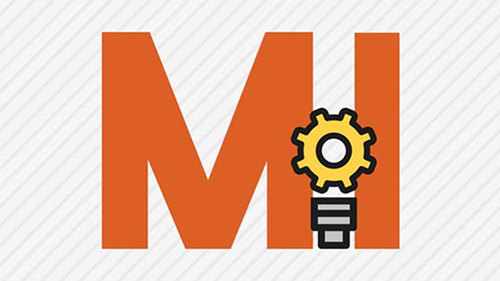Celebrating Manufacturing Innovation Day
Last year I penned an article for Innovation Day, that paid homage to the clients we work with who relentlessly challenge the status quo, push for new ways to be competitive and find better ways to boldly service customers. The three client cases I shared had a few other things in common too, they all happen to be in the manufacturing industry and are based in Connecticut.

Today, as the Connecticut Business & Industry Association (CBIA) is hosting Manufacturing Innovation Day, we agree that this is an industry that should be celebrated and supported as a major force behind our economy. We all celebrate the disrupters. And “the crazy ones.” But today, in this article, I want to celebrate those that don’t always get the applause. These are stories of incremental innovation—not the narrative of startup culture. These are stories from old-line companies that have had to transition and change mindsets, from in the inside out.
As we celebrate these manufacturers, we should rally behind them—whether from the steps of our state Capitol as part of the CBIA event or as engines helping to drive their growth year-round. Accounting for $42 billion in economic activity annually and employing more than 163,000 workers, when manufacturing succeeds in Connecticut, we all do.
Once again, I’d like to share a few of the projects we’re proud to be a part of, and more importantly, talk about the evolution of manufacturing. Rather than naming names this time, we’ll focus on the unique challenges this industry faces as a whole. Not just because of those pesky non-disclosure agreements that prevent me from naming clients, but also because these are challenges that many in this space are up against. We have an opportunity to learn from different approaches and apply it to support all the great things manufacturers in Connecticut are producing today—and tomorrow.
IoT: seeing, experiencing and feeling something new
Innovation is about bringing something new to market. It can be an entirely new product or category, or more often, finding new ways to bridge gaps between existing technologies. That’s what is happening with the Internet of Things. The company we’re working with did not invent IoT. But they are using it to create something new. They are pushing boundaries in new markets, sparking new ideas and delivering solutions that are changing the industry.
This project is all about changing the approach to how a traditional product is sold, by integrating the best of what new technology has to offer. It’s about making people see, experience and feel something new—an impressive accomplishment for a conservative and hyper-traditional category.
Stagnation: making room for the thought of something better
Some industries stagnate because of declining demand. Some because technological advancements in related categories make the original obsolete. And in others, because a single provider, or very few, has control over the category.
That’s exactly the environment that one of our manufacturing clients faces. A single manufacturer owns a significant portion of the market and has done little to improve upon existing technology for decades. Yet it’s increasingly difficult to enter the market offering something new, especially when it applies to healthcare. With frustrations around every corner, including supply chain and procurement headaches to the complexity of a highly regulated market, new solutions are met with extreme resistance.
But it doesn’t have to be that way. Settling is never more dangerous than when you’re in the business of saving lives. The promise of improving patient outcomes is an incredibly powerful motivator—and if we can be some small part of planting a seed that asks professionals within the industry to question what they’ve always known, to make room for the thought of something better, that is something I’m proud to bring forward.
A much-needed focus: innovation for healthcare
Speaking of connected devices and the healthcare landscape, the combination of the two offers an incredible opportunity for manufacturing. From wearables to implanted and stationary medical devices, the thought of technology being innovative for a human being to look after another is quite beautiful. Yet manufacturers that have not traditionally offered solutions for critical care need to form new relationships with facility executives and key decision-makers in a sector denominated by large OEM brands.
When we think about innovation, we need to think about how to introduce it in a new way too. Whether we’re helping our clients demonstrate how they are doing something entirely new, or how they are doing something differently, we need to find ways to communicate and establish relationships with new audiences. From awareness campaigns to lead generation, we implemented a variety of tactics to assist a manufacturer of transformative electrical and connectivity infrastructure products that helps healthcare facilities deliver better care.
Regardless of what industry Connecticut manufacturers support, be it major drivers including insurance and healthcare, defense and aviation or others, there is so much to celebrate today. We thank CBIA for more than two centuries of supporting businesses, large and small, and representing a diverse range of industries from every part of the state. We applaud all those here in Connecticut and beyond that push us forward—and a special thanks to all clients that allow us to be part of bringing innovation to market.


